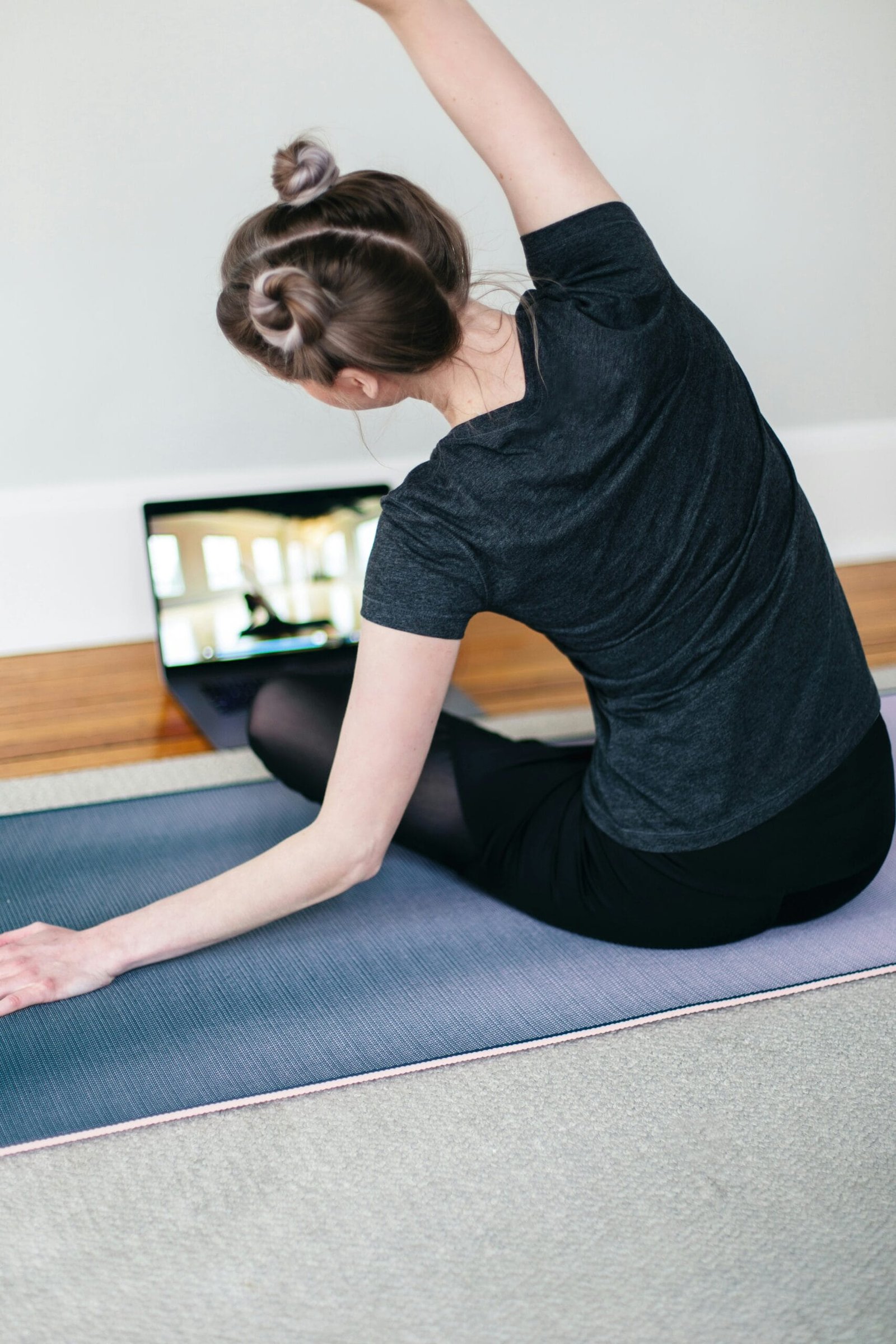The Ultimate Guide to Home Workout Routines: Stay Fit Without the Gym
Discover the benefits of home workouts, including flexibility, cost savings, and comfort. Learn how to set up your workout space, create personalized plans, and maintain motivation while achieving your fitness goals.
Home Workouts
Home workouts have become very popular. They offer a flexible and easy way to stay fit without going to the gym. You can work out whenever you want, fitting it into your busy schedule.
One big plus is you don’t have to travel far or stick to gym hours. You can work out at any time, like in the morning, at lunch, or late at night. This makes it perfect for people with tight schedules or those who work odd hours.
Home workouts can also be tailored to your fitness goals. You can pick exercises that help you lose weight, build muscle, or improve your health. Whether you like bodyweight exercises or need some equipment, you can make your workouts fun and effective.
Studies show that working out at home is good for your body and mind. It can make your heart healthier, improve your mood, and boost your overall well-being. Working out at home lets you enjoy these benefits in the comfort of your own space.
By choosing home workouts, you can lead a healthier life that’s both fun and lasting. Whether you’re new to fitness or have been working out for years, creating a routine at home can bring big health benefits without the need for a gym membership.
Benefits of Home Workouts
Home workouts are a great alternative to gym workouts. They save money and offer flexibility. You don’t need to spend a lot on gym memberships or classes. Basic equipment and online resources can help you reach your fitness goals without breaking the bank.
Home workouts are also super convenient. You don’t have to worry about gym hours or travel time. This makes it easy to fit workouts into your day, whether it’s a quick session during lunch or a longer one after work. The less time you spend commuting, the more likely you are to stick with your workout plan.
Working out at home is also more comfortable. The gym can be intimidating, but your home is familiar and relaxing. This comfort helps you stay motivated and enjoy your workouts more, which is great for those who prefer to exercise alone or in a space where they feel judged less.
In summary, home workouts offer many benefits beyond just getting fit. They save money, are convenient, and comfortable. These advantages make exercising at home a more appealing and accessible option for many people.
Setting Up Your Home Workout Space
Having a dedicated workout area at home is key to staying consistent. First, pick a quiet spot with enough room to move around. A spare room, basement, or part of your living room can work well. Make sure the area is clear for different exercises.
Next, think about the equipment you need. Depending on your goals, you might want resistance bands, dumbbells, or a yoga mat. These items can help with strength training, cardio, or stretching. If you can, consider adding a stability ball or kettlebell for more variety. You might also want an adjustable bench or pull-up bar for a more complete workout.
Choosing the right equipment is just the start. Think about adding motivational quotes or posters to your workout area. Good lighting is also key; natural light boosts mood and energy. If natural light isn’t possible, use artificial lighting that mimics daylight.
Keeping your space clean and organized is important too. It helps create a positive environment. This makes it easier to stick to your home workout routine.
Common Home Workout Routines
Home workouts are popular for keeping fit without a gym. They can fit any fitness level and goal. Let’s look at some common routines to help you reach your fitness goals.
Bodyweight exercises are a favorite. They use your own weight as resistance. You can do push-ups, squats, and planks anywhere, without special equipment.
Circuit training is another great option. It mixes aerobic and strength exercises in one session. This high-intensity workout burns calories and builds muscle endurance.
Yoga and pilates are great for those who want a calming workout. Yoga improves flexibility and mental wellness. Pilates focuses on core strength. Both are good for all skill levels.
By mixing these routines, you can create a workout plan that fits your goals and lifestyle. This approach helps maintain a healthy and balanced fitness routine.
Creating Your Personalized Workout Plan
Creating a workout plan is key to reaching your fitness goals. Start by setting SMART goals. For example, aim to run 5 kilometers in under 30 minutes in three months.
Next, schedule your workouts. Choose times that fit your routine. Consistency is important. Try to work out in the morning or during lunch.
Varying your workouts keeps them interesting. Mix strength training, cardio, yoga, and flexibility exercises. This keeps your workouts engaging and ensures you work different muscle groups.
Regularly check your progress. Keep a workout log to track improvements and challenges. Adjust your plan as needed. This keeps your workouts effective and aligned with your goals.
Nutrition Tips to Complement Your Workouts
Eating right is key to getting the most out of your home workouts. A balanced diet fuels your exercises and helps your body recover. It’s important to eat well before and after working out to perform and recover better.
Before your workout, eat something with carbs and a bit of protein. Carbs give you energy, and protein helps with muscle strength. A banana or a small energy bar 30-60 minutes before can boost your energy without making you feel full.
After your workout, eat something with lots of protein to help your muscles recover and grow. Options like protein shakes, Greek yogurt, or chicken salad are great. Also, eating complex carbs helps your muscles get back their energy.
Don’t forget about staying hydrated. Drinking water before, during, and after exercise is important. It helps you stay cool and keeps your joints moving smoothly.
Eat lots of whole foods like fruits, veggies, lean proteins, and healthy fats. These foods give you important vitamins and minerals. A balanced diet with your workouts is the best way to reach your fitness goals.
Staying Motivated at Home
Staying motivated with home workouts can be tough. But, there are ways to keep going. Using fitness apps is a great idea. They offer guided workouts, track your progress, and help you set goals.
Setting challenges for yourself can also boost your motivation. Try to do a certain number of workouts a week or learn a new skill. It makes your workouts more fun and keeps you focused.
Having a workout buddy is another big help. Working out with someone who wants the same results can be very motivating. You can schedule workouts together and make them more enjoyable.
Make sure your workouts fit your style. Mix up your exercises and change where you work out. These changes keep things interesting and fun.
Having a set routine helps you stay active. Pick specific times for your workouts to make it a habit. With these tips, staying motivated at home is easier and more fun.
Success Stories from Home Workouts
Many people have found success with home workouts instead of going to the gym. Their stories show that you can stay fit at home.
Sarah, a marketing pro, found it hard to fit in gym time. She started working out at home with bodyweight exercises, resistance bands, and yoga. She lost 20 pounds, felt more energetic, and mentally clearer. Her story proves that home workouts can be very effective with dedication.
John, a father of two, found it hard to fit gym sessions into his family life. He started following online workout programs and set up a workout space in his living room. His routine included HIIT and strength training, making the most of his time.
Over six months, John toned his body and made his family more health-conscious. They enjoyed fun workout sessions together. This shows how home workouts can fit into busy lives and bring families closer.
Lisa, a keen runner, faced challenges when gyms closed due to the pandemic. She adapted by using virtual classes and outdoor spaces. Running and strength training at home improved her performance and let her complete virtual races.
This story shows the resilience and adaptability of home workouts. It proves that people can keep up with fitness goals, no matter what.
These success stories highlight the benefits of home workouts. They improve fitness, mental health, and overall well-being. Home training is a great way to stay fit, even without a gym.
FAQs About Home Workouts
Starting a home workout routine can seem daunting. But, understanding the process makes it easier. The first step is to assess your fitness level and goals.
Choose a workout plan that matches your goals, whether it’s losing weight, building muscle, or improving fitness. Having a dedicated workout space in your home is also important. It helps create a productive environment.
Many people wonder about the equipment needed for home workouts. The type of equipment depends on the exercises you plan to do. Basic items like a yoga mat, resistance bands, and dumbbells can add variety to your workouts.
For a more extensive setup, consider kettlebells or an exercise bike. But, many effective exercises don’t need any equipment at all.
Injuries are a concern for home fitness routines. To avoid injuries, focus on proper form and technique. Always warm up before working out and cool down afterwards to aid recovery.
Listen to your body and don’t push through pain. If you feel discomfort, modify the exercise or seek advice from a fitness professional.
Maintaining motivation for home workouts can be a challenge. Set a consistent schedule, track your progress, and mix up your routines. Joining group challenges or virtual classes can also add a sense of community and accountability.
Dr. Maheen Khan is a Ph.D. holder in Psychology and an award-winning researcher with 15+ years of expertise in AI, health, finance, sustainability, and digital marketing. She blends in-depth research with real-world insights to deliver authoritative, engaging content.






